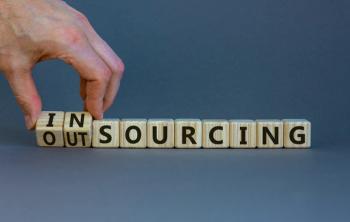
The doctor’s handshake: Your first and often your last impression on your patient
Since we use the handshake so often in our daily activities and it is so important, it may be helpful to revisit this important aspect of doctor-patient interaction.
Your handshake is often your first contact and physical interaction with your patients. It is an opportunity to create a lasting impression on your patient and others you meet and greet for the first time. This blog will discuss the importance of a handshake and how you can positively initiate the
I had a patient who was a retired Navy SEAL, and I will never forget my introduction to this fine young man when I walked into the room. He thrust out his hand and gave me a firm handshake, looking directly into my eyes as he introduced himself. I commented on his handshake, and he told me he received training from his father and SEAL training. We discussed the handshake, and I would like to share his suggestions.
I know that a handshake is a lesson that doctors should have all learned long ago. However, since we use the handshake so often in our daily activities and it is so important, it may be helpful to revisit this important aspect of doctor-patient interaction.
The way you shake hands speaks volumes about who you are as a person. For some, a handshake is just a useless formality. Still, to others, it indicates a person's depth of character, trustworthiness, and strength. You do much more than say "hello" when you shake hands. You are saying, "This is who I am ".
It is important to know how to shake hands with meaning.
However, the actual shaking of the hands is only a small part of shaking hands. Here are a few tips on how you can make the perfect handshake:
Look the person in the eyes
Always look a person in the eyes when you shake their hand, no matter how busy or brief the handshake might be.
Use a firm grip
A firm grip shows confidence, strength, and enthusiasm; be careful not to go overboard.
Don't be too hasty
A handshake should be inviting but not rushed. When you go in for a handshake, offer your hand with your fingers straight and your thumb high, and make sure you do not grip until the person's thumb is firmly locked next to yours.
Don't shake for too long
Two or three small pumps is fine, but don't overdo the shaking.
Make correct use of the left hand
Give a firm shake with the right hand, and you may use the left hand to touch them on the shoulder or elbow region, but sometimes the "correct" use of the left hand is not to use it. Use your own intelligence to determine the best use of the left hand. The left hand is particularly nice when a male shakes hands with a female patient. (I know that in this post-pandemic time, touching a patient may be frowned upon. I feel that the handshake is an integral part of the doctor-patient relationship. I use hand sanitizer in front of the patient before shaking their hand to demonstrate that I am not transmitting any pathogens from previous patients.)
Become verbal at the same time as you shake hands
Remember, shaking hands involves more than just a two-hands meeting. It requires eye contact, shoulder touching, a firm grip, and other factors such as how close you stand to the patient. One thing you should never forget to do when shaking someone's hand is use your speech in conjunction with the handshake.
The person's name is the most important speech to remember when shaking hands
Always use the other person's name and never use lazy substitutes like "mate," "brother," or "dude." People love to hear their own name. When you shake a person's hand and greet them by name, you effectively say, "You are important enough to me that I bothered to remember your name." Using a word like "captain," "coach," or "bud" shows you don't really care or didn't take the time to remember their name.
Introduce yourself by name at the onset of the handshaking
It is important to realize that other people want to remember your name just as much as you want to remember theirs – nobody likes forgetting a name, and it can be a source of embarrassment.
Bottom line:
The handshake is particularly important in the healthcare setting. Peace treaties have been promised, and numerous deals have been consummated over a handshake. Wars have been ended by a handshake. Great business deals have begun because of a good handshake. Make sure you follow the tips above whenever you shake someone's hand. A good handshake is a first impression that will last a long time in a person's mind. Remember, the adage still applies: "You never get a second chance to make a good first impression!"
Newsletter
Optimize your practice with the Physicians Practice newsletter, offering management pearls, leadership tips, and business strategies tailored for practice administrators and physicians of any specialty.














